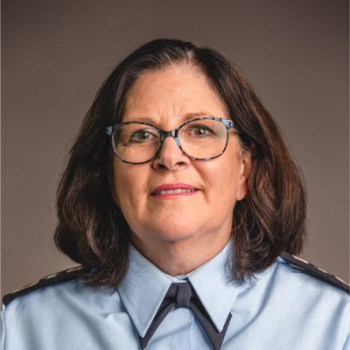The NSW SES has partnered with researchers from the University of Technology Sydney (UTS) in a world first project to investigate whether 5G telecommunications networks can help predict extreme weather events.

The research is based on a concept known as ‘network sensing’, where mobile networks are used instead of traditional environmental sensors to detect changes in the weather.
At the official launch of the NSW Government’s Flood and Storm Intelligence Sensing project and opening of UTS’s Network Sensing Lab on Tuesday, digital government and emergency services minister Jihad Dib said the project aims to extract local weather information from changes in wireless signals caused by rainfalls and waterflows.
The information is translated into localised rainfall and flooding data through machine learning, and that data is integrated with the NSW Spatial Digital Twin (SDT) and analysed using AI to model flood behaviour and impacts.
The digital twin will also be able to create a 4D visualisation of changes to landscape and infrastructure resulting from the event.
The researchers say because the technology utilises existing mobile networks, it minimises the need for additional infrastructure.
It’s also faster to deploy and more reliable than traditional sensors, which are at risk of being damaged by rain and floods.
A sensorless solution
TPG Telecom’s CTO Giovanni Chiarelli told the launch the project will bring cellular technology to the next level, potentially turning it into a critical asset for government agencies in the future.
He described it as a ‘perfect combination’ of advanced wireless technology, artificial intelligence and data analytics.
All of this is becoming possible without the deployment of a single sensor, so it is becoming a sensorless solution.
Giovanni Chiarelli
“We do not need sensors in the environment to detect what is going to happen,” he said.
“It’s the network itself, through broadcasting the signal and receiving the signals that have been broadcast, that is sensing what is happening.
“With cellular technology, starting from 5G and then 6G, all of this is becoming possible without the deployment of a single sensor, so it is becoming a sensorless solution.”
Improving emergency responses
The current pilot between SES and UTS researchers, funded by the NSW government in 2023, aims to prove at a basic level that network sensing technology works for environmental sensing, and that real time localised flooding can be visualised via a digital twin.
NSW SES Commissioner Carlene York said there’s a lack of real time data about floods, but network sensing could revolutionise the way the SES plans for and responds to natural disasters.
It also has the potential to improve operational decision-making and enable more timely warnings and information.
Information extracted from network signals could also inform how assets and SES officers are deployed, and help model the impact of floods on communities and infrastructure.
“The flood and storm intelligence we rely on forms the basis for our decision making in emergency responses and it’s critical we have timely information,” Commissioner York said.
“The ability to plan ahead using the data collected from 5G sensors would allow us to respond even more efficiently to the impacts of floods and storms.
“This project will take us miles ahead into what we can get with real time data. “
She said the SES also works closely with councils in relation to their planning decisions, and the technology could be used to inform planning decisions.
A unique collaboration
Mr Dib said the initiative represented a coming together of government, academia, emergency services providers and technology providers in a digital space.
“While we can’t stop natural disasters from occurring, we can change he way we interact, we can change the way we predict whats going to happen and how we deal with what’s going to happen,” he said.
“This will literally save lives, it will save homes, it will save properties. It will mean we’re better prepared for where we need to be, and the more precise and timely the warnings we can give, the better we will be at being able to respond.
“This revolutionary. It’s not only an Australian first but a world first.”





Leave a Reply